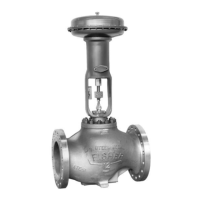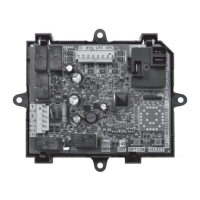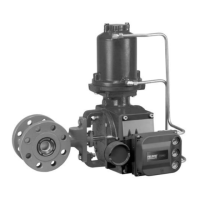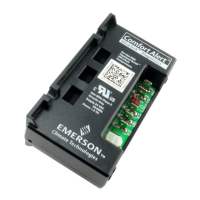4
INSTALLATION
MAIN PIPING CONNECTIONS
NOTE
Refer to warnings and cautions on page 3 before
attempting installation. All piping must comply
with local codes, ordinances, and/or national fuel
gas codes.
1. Turn o electrical power to the system at the fuse
box or circuit breaker. Also turn o the main gas
supply.
2. If replacing an existing valve, disconnect all
plumbing and electrical connections from the
old control.
3. This valve may be installed upright, + or – 90˚ from
upright, or vertical (refer to g. 1). The arrows on
the valve identication label and on the bottom
plate indicate direction of gas ow through the
valve.
4. You should use new pipe that is properly cham-
fered, reamed, and free of burrs and chips. If
you are using old pipe, be sure it is clean and
free of rust, scale, burrs, chips, and old pipe joint
compound.
5. Apply pipe joint compound (pipe dope) or teon
tape that is approved for all gases, only to the
male threads of the pipe joints. DO NOT apply
compound or teon tape to the rst two threads
(see g. 3 for typical piping connections).
6. Do not tighten piping excessively, as this may
damage the valve (50 ft lbs max).
7. See SYSTEM WIRING when making electrical
connections. After all gas and electrical connec-
tions are completed, turn gas on and check for
gas leaks with leak detection solution or soap
suds. Bubbles forming indicate a leak. SHUT
OFF GAS AND FIX ALL LEAKS IMMEDIATELY.
LP GAS CONVERSION
For LP gas conversion, use the LP conversion kit
supplied with this control. Refer to the instruc-
tions packed with LP conversion kit.
PILOT GAS CONNECTION
These gas valves are shipped with the pilot outlet
plugged. For installations requiring pilot gas
(Proven/Intermittent Pilot Systems), remove the
plug from the pilot gas outlet (see g. 2) and use
the tting packed separately with the valve.
Install the tting into the pilot gas outlet, turning
until nger tight. Insert clean, de-burred 1/4" O.D.
tubing all the way through the tting. While hold-
ing the tubing securely, slowly tighten the tting
until you feel a slight “give”. Tighten the tting an
additional 1-1/2 turns.
The plug should not be removed for a Direct
Burner Ignition system such as Direct Spark or Hot
Surface Ignition.
Refer to page 7 for pilot ame adjustment infor-
mation.
Allpipingmustcomplywithlocalcodes,ordinances,
and/or national fuel gas codes.
Piped Gas
Supply
Piped Gas
Supply
Tubing Gas
Supply
NOTE: ALWAYS INCLUDE A
DRIP LEG IN PIPING
Figure 2. Typical gas valve piping
NOTE: A MANUAL SHUTOFF VALVE
MUST BE INSTALLED WITHIN
6 FEET OF THE EQUIPMENT
Horizontal
Drop
Gas Valve
3 in.
minimum
Gas Valve
Riser
3 in.
minimum
Drop
Horizontal
Riser
Gas Valve
3 in.
minimum
Figure 3. Typical Gas Valve Piping
NOTE
INSTALLATION

